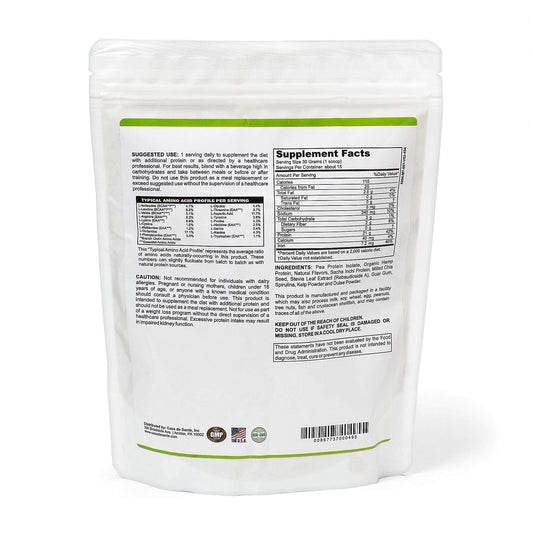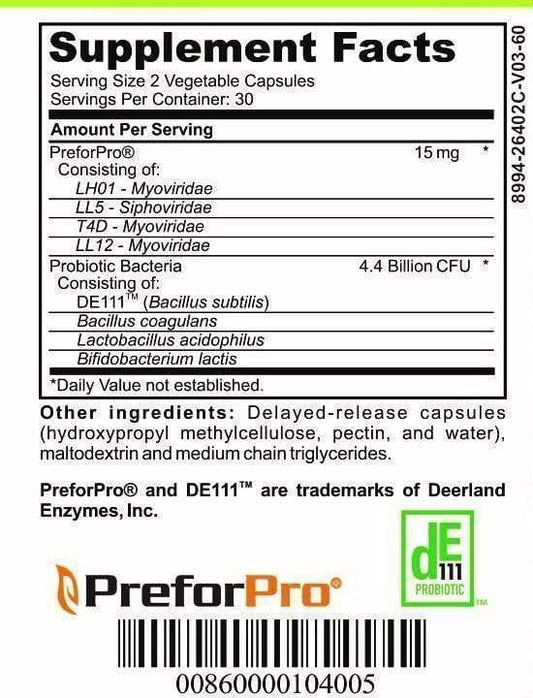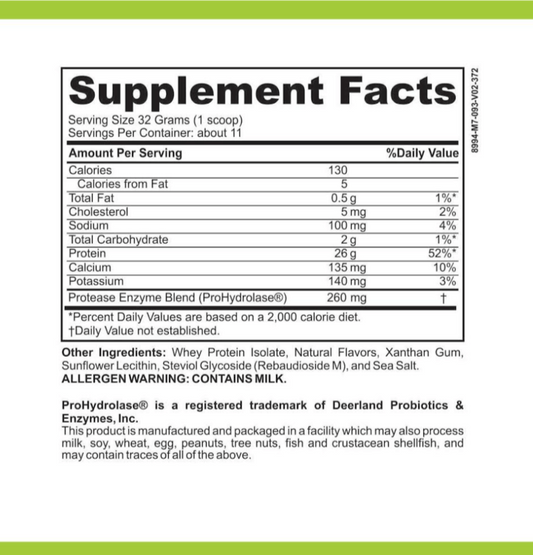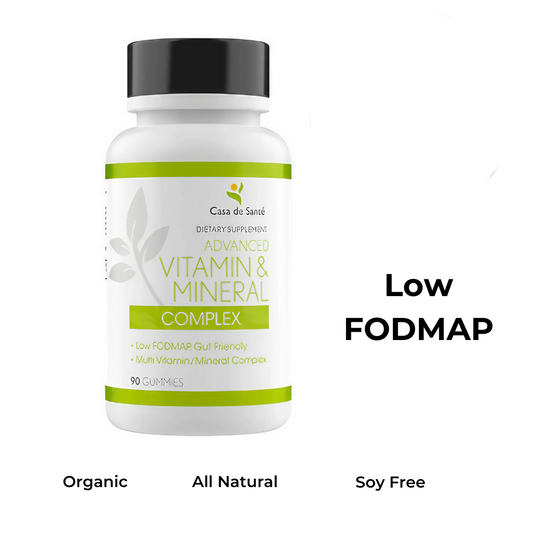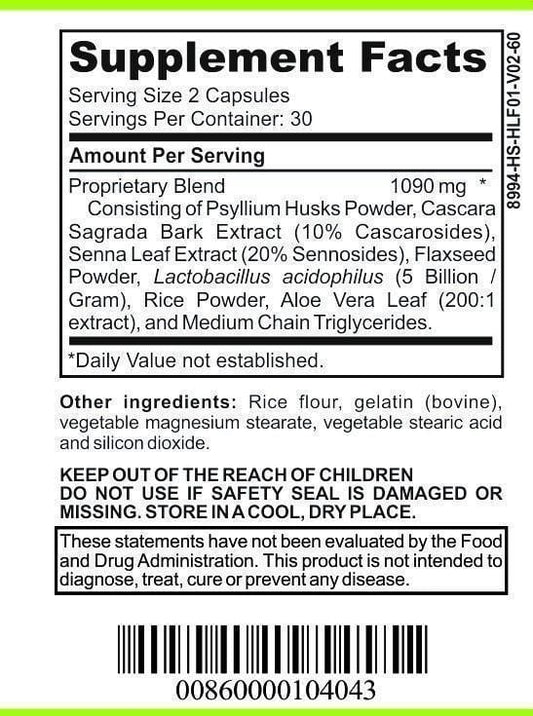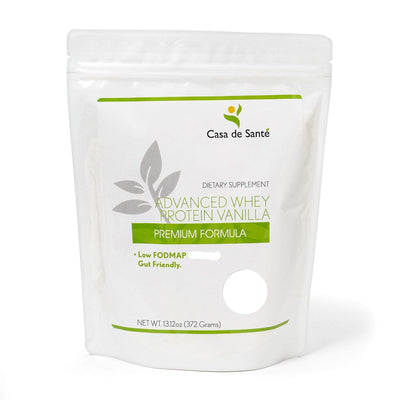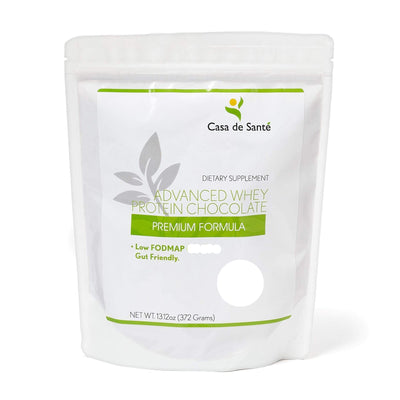Is Licorice Root Gluten Free
Is Licorice Root Gluten Free
Licorice root has gained popularity in recent years due to its numerous health benefits and unique flavor. However, for those who follow a gluten-free diet, the question arises: Is licorice root gluten free? In order to answer this question, it is important to understand what gluten is and how it affects our health. Let's delve into the subject and explore the gluten content of licorice root, as well as gluten-free alternatives and tips for incorporating licorice root into a gluten-free diet.
Understanding Gluten and Its Effects
Gluten is a type of protein found in wheat, barley, and rye. It provides elasticity to dough and helps it rise during baking. Unfortunately, for individuals with celiac disease or gluten sensitivity, consuming gluten can trigger a range of adverse symptoms.
Let's delve deeper into the world of gluten and explore its composition, common sources, and the impact it can have on our health.
What is Gluten?
Gluten is a composite protein made up of two smaller proteins: gliadin and glutenin. These proteins give wheat-based products their unique texture and structure. When water is added to flour, gluten forms and creates a network that traps air bubbles, allowing dough to rise and resulting in the fluffy bread we all love.
However, for some individuals, this seemingly harmless protein can wreak havoc on their bodies.
Common Sources of Gluten
Gluten can be found in a variety of foods, including bread, pasta, cereals, and baked goods. These are the obvious sources that most people are aware of. However, gluten can also hide in less obvious places, making it challenging for those with gluten intolerance to avoid it completely.
Sauces and gravies, for example, often contain gluten as a thickening agent. Processed foods, such as deli meats, soups, and even some condiments, may also contain hidden gluten. It is crucial for individuals with gluten sensitivity to carefully read food labels and be aware of potential cross-contamination.
The Impact of Gluten on Health
For individuals with celiac disease, consuming gluten can trigger an autoimmune response in the small intestine. This response leads to inflammation and damage to the lining of the small intestine, impairing its ability to absorb nutrients properly. Over time, this malabsorption can result in a wide range of symptoms and complications.
Abdominal pain, bloating, diarrhea, and fatigue are some of the most common symptoms experienced by individuals with celiac disease. However, the effects of gluten intolerance can extend beyond the digestive system. Skin rashes, joint pain, and even neurological symptoms, such as headaches and difficulty concentrating, have been reported in some cases.
It's important to note that not everyone who experiences adverse effects from gluten has celiac disease. Non-celiac gluten sensitivity, also known as gluten intolerance, is a condition where individuals experience similar symptoms but without the autoimmune response seen in celiac disease. The exact mechanisms behind gluten sensitivity are still not fully understood, but research suggests that it may involve the immune system and gut inflammation.
While celiac disease affects approximately 1% of the population, estimates suggest that gluten sensitivity may be more prevalent, affecting a larger number of individuals. The only way to manage both celiac disease and gluten sensitivity is to strictly follow a gluten-free diet.
In conclusion, gluten, once a staple in our diets, has become a topic of concern for many. Whether you have celiac disease, gluten sensitivity, or simply want to explore a gluten-free lifestyle, understanding the composition of gluten, its common sources, and its impact on health is essential. By being informed, we can make educated choices about the foods we consume and ensure our well-being.
The Basics of Licorice Root
Licorice root, also known as Glycyrrhiza glabra, has been used for centuries in traditional medicine for its potential health benefits. It is native to the Mediterranean region and is now cultivated worldwide.
Licorice root has a long and fascinating history, dating back to ancient times. It was highly valued by the Egyptians, Greeks, and Romans for its medicinal properties. The ancient Egyptians even included it in their tombs, believing it would provide them with comfort in the afterlife.
What sets licorice root apart is its distinct sweet taste, which comes from the compound glycyrrhizin. This natural sweetness has made licorice root a popular ingredient in candies, teas, and herbal remedies.
What is Licorice Root?
Licorice root is the underground stem, or rhizome, of the licorice plant. It is a perennial herb that belongs to the legume family. The plant itself can grow up to three feet tall and has beautiful purple flowers.
Harvesting licorice root is a meticulous process. The roots are carefully dug up, washed, and then dried. Once dried, they can be ground into a powder or used in their whole form.
It's important to note that not all licorice candies or products contain actual licorice root. Many commercially available licorice-flavored products use artificial flavorings instead.
Traditional Uses of Licorice Root
Licorice root has a long history of medicinal use. It has been traditionally used to soothe coughs, relieve stomach ulcers, and promote digestive health. The soothing properties of licorice root can help reduce inflammation in the throat and provide relief from respiratory ailments.
In traditional Chinese medicine, licorice root is often combined with other herbs to create herbal formulas. It is believed to harmonize the effects of other herbs and enhance their therapeutic benefits.
Additionally, licorice root has been used topically to soothe skin irritations and inflammations. Its anti-inflammatory properties make it a popular ingredient in skincare products, especially those targeting sensitive or acne-prone skin.
Nutritional Profile of Licorice Root
Licorice root contains several bioactive compounds, making it a potentially beneficial addition to your diet. In addition to glycyrrhizin, licorice root contains flavonoids, antioxidants, and other beneficial compounds.
Flavonoids are plant compounds known for their antioxidant properties. They help protect the body against oxidative stress and reduce the risk of chronic diseases.
Antioxidants, on the other hand, help neutralize harmful free radicals in the body, which can damage cells and contribute to various health issues.
Despite its potential health benefits, it is important to note that licorice root should be consumed in moderation. Excessive consumption of licorice root can lead to side effects such as high blood pressure and electrolyte imbalances. It is always best to consult with a healthcare professional before incorporating licorice root into your diet or using it as a supplement.
The Gluten Content in Licorice Root
When it comes to licorice root and its gluten content, it is important to consider the processing methods and other factors that may affect its gluten presence.
Licorice root, scientifically known as Glycyrrhiza glabra, has been used for centuries for its medicinal properties. It is a herbaceous perennial plant native to the Mediterranean region and parts of Asia. Licorice root is well-known for its distinct sweet taste and is commonly used as a flavoring agent in candies, beverages, and herbal teas.
Processing of Licorice Root
During the processing of licorice root, the rhizome is typically cleaned, dried, and ground into a powder. This powder is then used in various forms, including as an extract or in herbal formulations. Licorice root extract is obtained by boiling the powdered root in water and then evaporating the liquid to obtain a concentrated extract.
The processing methods used for licorice root can vary depending on the intended use of the final product. Licorice root powder is often used as a natural sweetener in confectionery products, while licorice root extract is commonly used in traditional medicine for its potential health benefits.
Factors Affecting Gluten Presence in Licorice Root
While licorice root itself does not contain gluten, cross-contamination can occur during processing if the licorice root is processed in facilities that also handle gluten-containing ingredients. This is particularly important for individuals with gluten sensitivity or celiac disease, who need to strictly avoid gluten in their diet.
Manufacturers of licorice root products are aware of the importance of gluten-free options and take measures to prevent cross-contamination. However, it is crucial for consumers to carefully read product labels or contact the manufacturer to ensure that the licorice root products are gluten-free.
Furthermore, it is worth noting that licorice root contains certain compounds, such as glycyrrhizin, that may have potential health benefits. These compounds have been studied for their anti-inflammatory, antioxidant, and antimicrobial properties. However, more research is needed to fully understand the effects of licorice root and its compounds on human health.
In conclusion, licorice root itself does not contain gluten, but cross-contamination can occur during processing. Therefore, it is important for individuals with gluten sensitivity to carefully choose licorice root products that are labeled as gluten-free or contact the manufacturer for more information.
Gluten-Free Alternatives to Licorice Root
For individuals following a gluten-free diet who still desire the unique taste of licorice, there are several alternatives available.
Natural Gluten-Free Substitutes
Anise seeds, fennel seeds, and star anise are natural sources of licorice-like flavor and can be used as substitutes in recipes or enjoyed as a standalone treat. These options provide a similar taste experience without the risk of gluten contamination.
Gluten-Free Licorice Products
Fortunately, there are also gluten-free licorice products available on the market. These products are specifically manufactured to be free from gluten and are safe for individuals with celiac disease or gluten sensitivity to consume.
When purchasing gluten-free licorice products, it is important to look for reputable brands that clearly label their products as gluten-free. This will provide assurance that the licorice has been produced in a dedicated gluten-free facility and is safe for consumption.
Living Gluten-Free with Licorice Root
For individuals following a gluten-free diet who wish to incorporate licorice root into their lifestyle, there are various ways to enjoy this unique ingredient while minimizing the risk of gluten contamination.
Incorporating Licorice Root in a Gluten-Free Diet
One way to enjoy licorice root while staying gluten-free is to use natural licorice flavorings or extracts in homemade recipes. These can be added to baked goods, teas, or other culinary creations to infuse them with a delightful licorice taste.
Additionally, licorice root can be brewed into a soothing tea that provides a natural, gluten-free option for enjoying this flavorful herb. Simply steep a few pieces of licorice root in hot water and enjoy the comforting warmth and taste.
Potential Risks and Precautions
It is important to note that licorice root should be consumed in moderation, even for individuals without gluten sensitivities. Long-term or excessive use of licorice root can lead to elevated blood pressure, potassium depletion, and other health concerns.
If you have any existing medical conditions or take medications, it is always advisable to consult with a healthcare professional before incorporating licorice root into your diet.
Tips for Buying Gluten-Free Licorice Root
When purchasing licorice root products, whether they are gluten-free alternatives or licorice root itself, it is essential to be an informed consumer. Check product labels carefully to ensure they are certified gluten-free and produced in gluten-free facilities.
Furthermore, consider purchasing from reputable sources that prioritize quality and have established credibility in the market. This will help ensure the products you choose are of high quality and free from gluten contamination.
In conclusion, licorice root itself does not contain gluten. However, due to potential cross-contamination during processing, it is crucial to choose licorice root products carefully and opt for reputable brands that clearly label their products as gluten-free. By following these guidelines and incorporating licorice root into a balanced gluten-free diet, you can enjoy the unique flavor and potential health benefits of this ancient herb without compromising your dietary needs.


